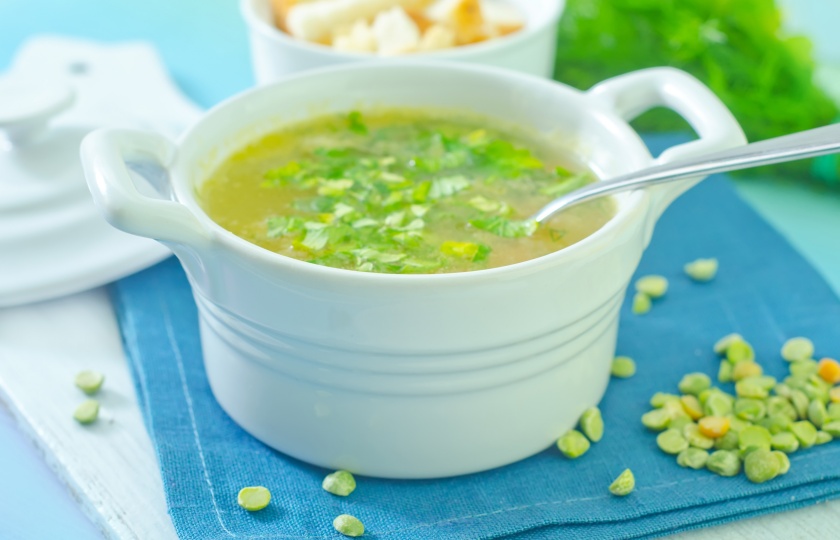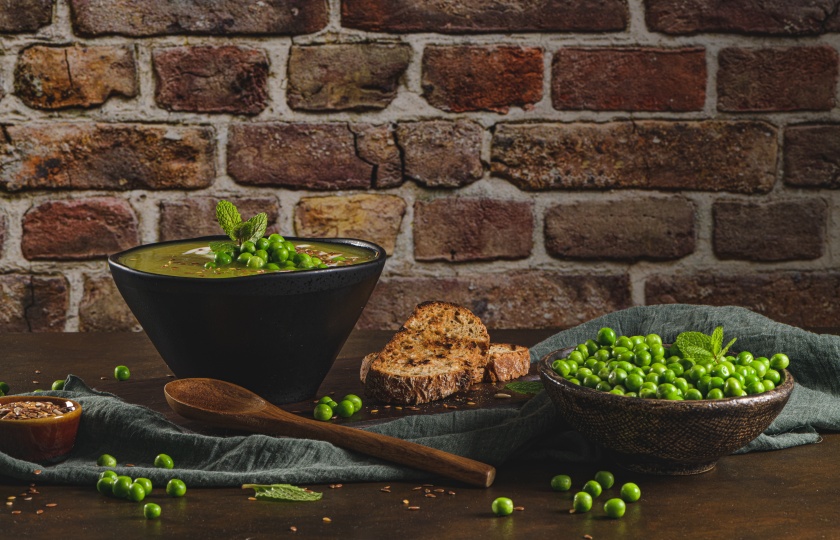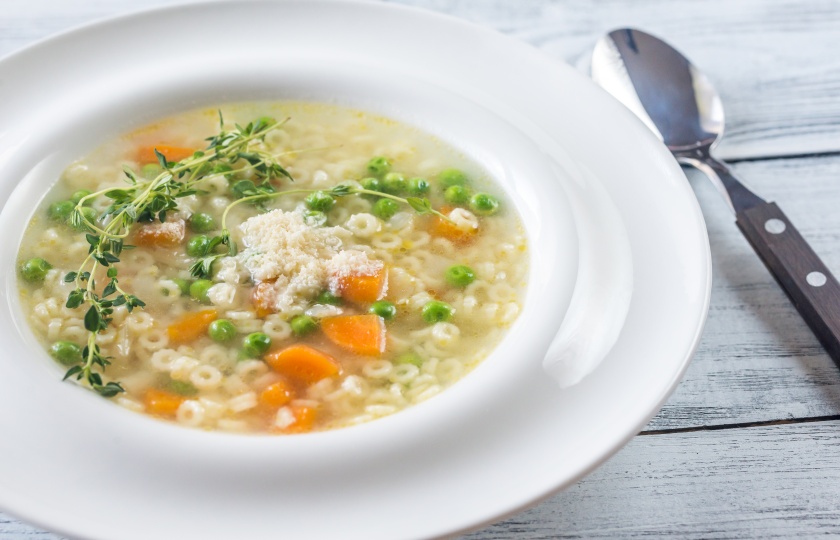Mastering the Skill: How to Cook Pea Soup on Induction Stove

When cooking pea soup on an induction stove, there are certain points to note. The following introduces the specific method of cooking pea soup on an induction stove to help you successfully make a delicious soup.
How to cook pea soup on an induction stove?
The method for making pea soup is to soak peas in advance for 4 hours first. Then boil them over medium heat with an induction cooker and turn to low heat to simmer for about 40 minutes.
The specific steps are as follows: Put the soaked peas into a pot, add an appropriate amount of clear water to submerge the peas by 3 centimeters. Turn on the induction cooker at 2000W and boil over medium heat. After boiling appears, turn to 800W and simmer slowly. During this period, stir appropriately from time to time to prevent sticking to the pot.
The timing of adding seasonings is very important. It is recommended to add an appropriate amount of salt to season when the peas are cooked to seven-tenths done. This can maintain the taste of peas and also make them flavorful. If you want the soup to be thicker, you can mash some peas. In this way, the soup will be more creamy.
Precautions include: Peas must be fully soaked, otherwise they are not easy to cook thoroughly; during the cooking process, always pay attention to the thickness of the soup. If there is not enough water, you can add hot water appropriately; finally, before serving, you can add a little pepper to enhance the flavor, but don't overdo it so as not to overshadow the main ingredient.
Why is my pea soup not getting soft?
Insufficient soaking time
A common reason for the pea soup not being soft when cooked is insufficient soaking time. The peas have not absorbed enough water. Therefore, ensure a sufficient soaking time. Soak the dried peas for at least 4 hours. Soaking them overnight is even better. Using warm water for soaking yields better results.
Poor heat control
Using the wrong heat during cooking won't do either. You need to boil it over high heat first, then switch to low heat and simmer for more than 40 minutes. Also, don't keep opening the lid during this period, otherwise the heat will dissipate and it will be difficult for the peas to become soft.
Adding salt too early
Adding salt too early during seasoning will affect the softening of the peas. Wait until the peas have become soft before adding salt for seasoning.
The quality of the peas themselves
If you follow the correct method but still can't cook the peas soft, it might be a problem with the peas themselves. For example, when buying them at the supermarket, if you didn't pay attention to the production date, peas that have been stored for a long time will be very difficult to cook thoroughly.
Unsuitable water amount
During the cooking process, if the water amount is insufficient and the water level does not remain 2 - 3 cm above the peas all the time, the peas cannot absorb enough water, which will also result in them not being soft. If the water is insufficient, add hot water in time.

How do you keep pea soup from burning?
The key to preventing the pea soup from burning is to control the heat and the stirring frequency well.
When cooking the pea soup, boil it over high heat at the beginning, and then immediately turn to low heat to simmer, maintaining a gentle boiling state. Stir gently with a spoon every 10-15 minutes, and be sure to stir from the bottom of the pot upwards. This can prevent the peas from sinking to the bottom and sticking to the pot.
Maintain an appropriate amount of water during the cooking process. Generally, the water level should be 2-3 cm above the peas. If you find that the soup becomes thick, add an appropriate amount of hot water in time. Using a pot with a thick bottom works better because the heat is distributed evenly and it is not easy to have local overheating that causes the bottom to burn.
If you want the pea soup to be thicker but not burnt, you can mash some of the peas when they are almost cooked. When seasoning at the end, reduce the soup over low heat. This can maintain a rich taste without burning. If you don't plan to eat it immediately after cooking, turn off the heat in time to avoid scorching at the bottom.
What happens if you don't soak peas before cooking?
Problems of cooking peas without soaking:
Peas are difficult to cook thoroughly. Even if the cooking time is prolonged, it is still difficult to achieve the ideal soft and tender state, and the taste is rather hard when eaten.
The cooking time will be significantly prolonged. It often takes 2 to 3 times the usual time to cook them thoroughly, which not only wastes fuel but also increases the workload in the kitchen.
It is prone to causing flatulence. Since some indigestible substances in the peas are not fully dissolved during soaking, flatulence may occur after consumption.
Benefits of soaking peas:
It can shorten the cooking time, making cooking more efficient and saving time.
It makes peas absorb seasonings more easily, resulting in better taste and texture.
During soaking, indigestible substances in peas will dissolve in the water. Pouring out the soaking water can reduce the feeling of flatulence after consumption.
Remedies and suggestions for forgetting to soak:
If you really forget to soak in advance, you can quickly soak them in warm water for 1 hour or use a pressure cooker for cooking to make up for it, but the effect is still not as good as cooking after full soaking.
It is suggested to develop the good habit of soaking peas in advance. This way, cooking will be easier and you can achieve twice the result with half the effort.

Can you boil peas for too long?
Peas should not be cooked for too long. The optimal cooking time is 20-30 minutes in an ordinary pot and 10-15 minutes in a pressure cooker. Cooking for too long will cause the peas to become overly soft and deteriorated, with nutrient loss, sticky soup, and extremely poor texture.
There are three simple ways to determine if the peas are cooked well: You can easily pierce through them with chopsticks; taste one and feel it's soft but not falling apart; look at the soup color, which should be clear and not cloudy. If you continue cooking, the peas will crack and deform, and the soup will become cloudy and sticky due to the precipitation of starch, and even have a burnt smell.
When cooking peas at home, it's best to soak them for 2-4 hours first. When cooking, use medium heat and test the softness with chopsticks every 5 minutes. After the peas become soft, add seasonings and cook for another 2-3 minutes before turning off the heat. This way, it retains both nutrients and a delicious taste.
Which pot is more suitable for cooking pea soup on an induction cooker?
For cooking pea soup with an induction cooker, stainless steel pots or iron pots are the most suitable. These two types of cookware have uniform heat conduction, are high-temperature resistant, and are not easy to stick.
Stainless steel pots are affordable and easy to clean. However, choose those with a special label for induction cookers. Ordinary stainless steel pots may not be used on induction cookers. Although iron pots are relatively heavy, they heat more evenly. The pea soup cooked in an iron pot tastes better. When using it, pay attention to controlling the heat to avoid burning.
Ceramic pots and aluminum pots are not recommended. Ceramic pots are easy to crack. Aluminum pots have uneven heat conduction and are easy to deform. When choosing cookware, it is best to select those with a thicker bottom and an anti-scald handle, so that they are safer and more convenient to use.























